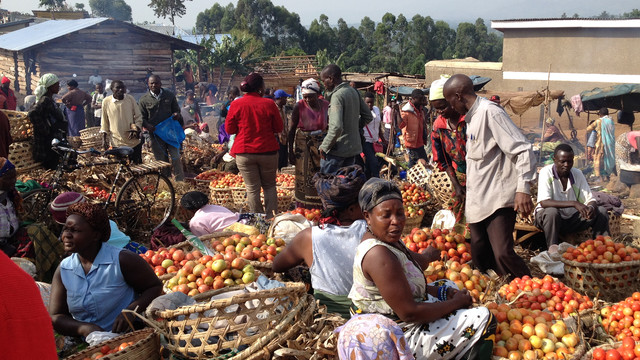New IIED toolkit supports least developed countries to report accurately on emissions, crucial for policy and planning
A new hands-on guide will arm least developed countries (LDCs) and developing countries with more accurate emissions information, supporting better decision-making and more effective policies.

Worker measuring the greenhouse gas emissions of rice production in Colombia (Photo: 2011CIAT/NeilPalmer, via Flickr, CC BY-SA 2.0)
A core requirement of the climate Paris Agreement is for countries to report on their greenhouse gas (GHG) emissions and the action they will take to reduce them.
National GHG inventories – listing human-induced GHG emissions for a certain year or period – are central to this reporting process.
Accurate emissions reporting underpins the Paris Agreement’s overarching goal: to limit global warming to 2°C, and ideally keep it below 1.5°C.
GHG inventories enable countries to understand their current and historic contribution to global emissions, define policies and measures to reduce emissions, and assess if they are on track to meet their emissions reduction targets.
They require countries to gather and compile quantitative information on human activities that generate emissions – such as fuel consumption, crop production and livestock farming.
With more accurate emission inventories, LDCs and developing countries can make more informed decisions around how to reduce their emissions, including which sectors to focus on. Based on better information and more accurate reports, policies and planning are more effective and easier to implement.
But compiling these inventories is complex. Gathering the necessary information requires substantial resource and strong technical expertise. For the LDCs, the process of collating this information is onerous as they have lower reporting capacity and experience.
IIED’s new toolkit supports decision-makers and inventory compilers from LDCs and other developing countries to prepare accurate GHG inventories based on their country’s capabilities, constraints and priorities.
To prepare their inventories, parties to the Paris Agreement agreed to use the guidelines set out by the Intergovernmental Panel on Climate Change (IPPC). While crucial for accurate emissions reporting and supporting the 1.5°C goal, the IPCC guidelines are complex and can be difficult for some countries to digest and implement.
This highly practical, user-friendly guide unpacks the IPCC guidelines. It sets out the main principles, includes exercises to support decision making and explains tricky terminology. The guide is designed to set LDCs and developing countries on the right track for preparing their emission inventories, helping to avoid inaccuracies which can be costly further down the line.
Case studies provide clarity and lessons
The guide will also be valuable for countries more experienced in reporting, helping them prepare high quality GHG inventories that reflect their national circumstances. It includes case studies from Chile, Colombia and South Africa showing their journey and the decision-making processes that enabled them to improve the accuracy of their national inventories.
Yamikani Idriss, Least Developed Countries Group transparency coordinator said: “This is a very useful hands-on guide that will help LDCs report accurately on their emissions, in turn sharpening their policies and planning by ensuring they are based on precise information.
"And it’s also about LDCs delivering on their commitments. The LDCs are ambitious and passionate about doing everything we can to meet the reporting requirements of the Paris Agreement. This toolkit will set LDCs at the beginning of the emissions reporting journey on the right path.”
- Read more about how IIED is supporting the LDCs to negotiate and implement the Enhanced Transparency Framework under the Paris Agreement



